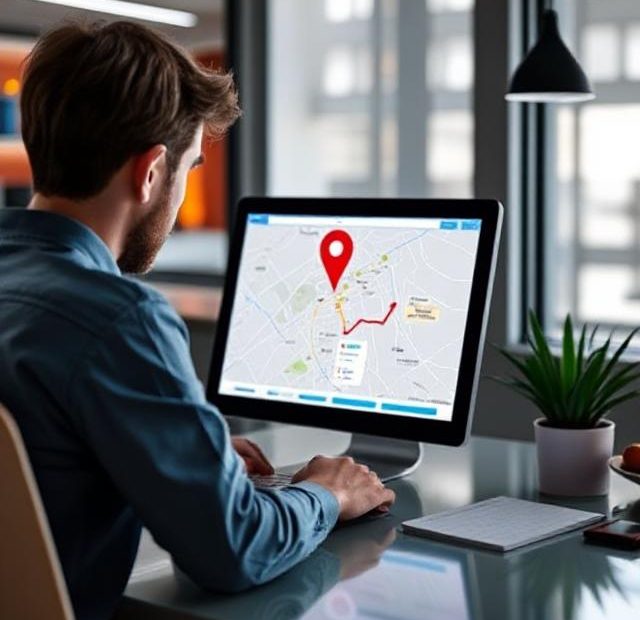How to Track Local SEO Success in Google
If you’re investing time and money into local SEO, you want to know it’s paying off. But how do you track local SEO success in Google? In 2025, it’s more important than ever to monitor how people find your business online—especially from local searches like “best dentist near me” or “pizza delivery in Dhanmondi.”
This article will walk you through the tools and methods you can use to track, measure, and improve your local SEO performance.
1. Monitor Your Google Business Profile (GBP) Insights
Google Business Profile (formerly Google My Business) is the core of your local SEO presence. Your GBP includes key data under the “Insights” section:
-
Search terms used to find your listing
-
Views from Search and Maps
-
Customer actions like clicks, calls, or direction requests
-
Photo views and comparison with competitors
These metrics tell you how often and how effectively your business shows up in local intent searches.
✅ Pro Tip: Review these insights monthly and watch for trends.
2. Track Local Rankings with Geo-Targeted Tools
Tracking your keyword rankings is essential—but general SEO tools don’t show localized results. Use specialized tools like:
-
BrightLocal
-
Whitespark
-
Local Falcon
-
GeoRanker
These tools let you check your rankings by city or ZIP code, which is vital for businesses targeting specific areas.
Focus on long-tail, localized terms such as:
-
“emergency electrician in Banani”
-
“halal restaurant near Gulshan”
-
“best hair salon Dhanmondi”
3. Use Google Search Console for Local Queries
Google Search Console (GSC) gives you valuable data about how your website appears in search results, including:
-
Top queries
-
Clicks and impressions
-
CTR (click-through rate)
-
Page performance
To track local SEO performance:
-
Open GSC > Performance
-
Use filters to find queries with local intent (like “near me” or city names)
-
Monitor changes in impressions and rankings over time
This helps identify what search terms are truly driving traffic to your site.
4. Analyze Website Traffic with Google Analytics
Using Google Analytics (GA4), you can:
-
See where your traffic is coming from (Google, Maps, organic)
-
Identify local visitors by city/region
-
Track behavior on location-specific pages
-
Monitor phone clicks, contact form submissions, and booking events
Set up conversion goals or events for local-specific actions like “click to call” or “get directions” to connect your SEO efforts with real results.
5. Measure Engagement on Google Maps
Being listed is one thing—being found on the map is another.
Use tools like:
-
Local Falcon
-
GMB Everywhere
-
PlePer
These tools show your business’s visibility on Google Maps across various neighborhoods or ZIP codes. You’ll find out whether you rank in the local pack (Top 3 results shown on Maps).
✅ Tip: Add UTM tags to your “Website” link on GBP to track map traffic in Google Analytics.
6. Track Google Reviews and User Interaction
Reviews matter for SEO, conversions, and trust. Google uses them as a ranking signal in local search. Here’s what to track:
-
Review count
-
Star rating average
-
Review keywords (Google may surface relevant ones in search)
-
Response rate and frequency
Use review monitoring tools like Podium, Reputation.com, or check manually.
Responding to reviews boosts engagement and signals Google that your business is active.
7. Set Up Monthly Reports and KPIs
Tracking means nothing if you don’t review and act on the data. Create a monthly report with KPIs like:
-
Total GBP views and interactions
-
Local keyword rankings
-
Website traffic from local queries
-
Conversions from local users
-
Review growth and reputation score
Use tools like Looker Studio, SE Ranking, or BrightLocal to automate these reports and make them easy to understand.
8. Bonus Tip: Track Voice & Mobile Local Queries
In 2025, more local searches are voice-driven. Phrases like:
-
“Where can I buy flowers near me?”
-
“Best sushi open now in Dhaka”
Start monitoring voice-style queries in Google Search Console and GBP Q&A. These represent buyer-ready users looking for fast answers—and you need to be the one they find.
Conclusion: Measure What Matters
Local SEO is about more than rankings—it’s about visibility, trust, and conversions. By using tools like Google Business Profile, Search Console, Analytics, and local rank trackers, you can clearly understand how well your business is performing online.
Track the data. Analyze the results. Take action. That’s how you turn local searches into loyal customers. Also, you can learn more about GMB Questions and Answers here.
